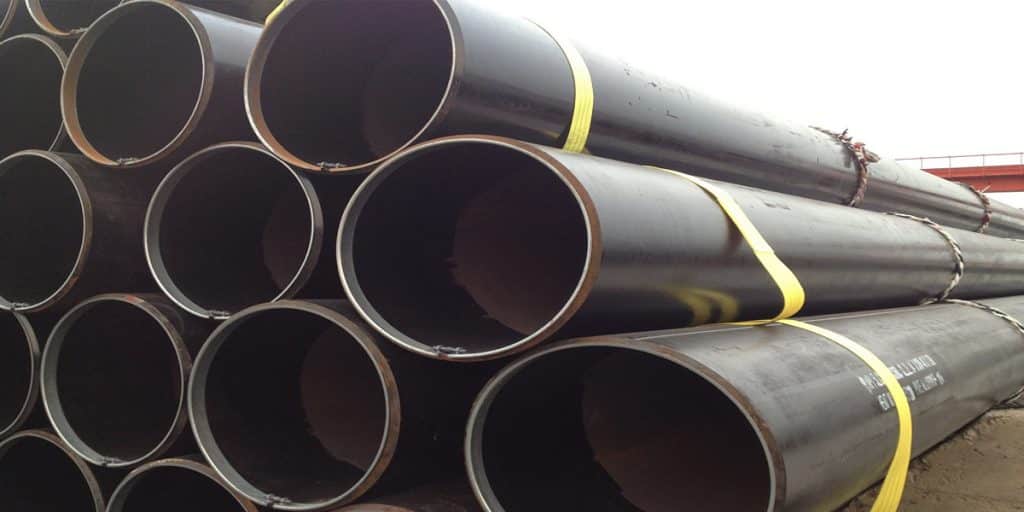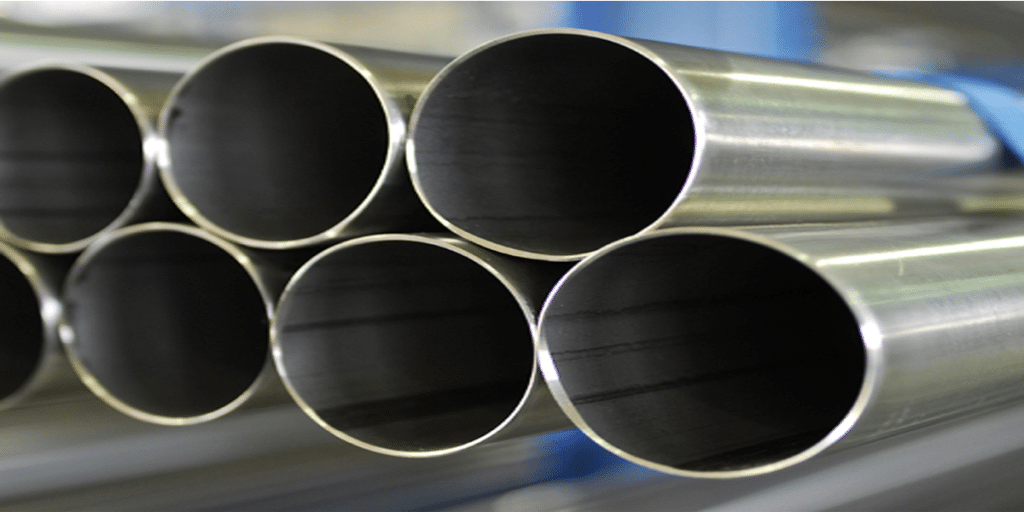In structural engineering, water and drainage systems, and oil and gas transmission lines, ASTM A53 Type E Grade B ERW pipes are widely recognized for their stable performance, cost efficiency, and reliable quality.
This article provides an in-depth look into the manufacturing process, testing procedures, and performance standards of ASTM A53 Grade B steel pipes—helping buyers and engineers better understand product quality and make informed purchasing decisions. It also highlights LONGMA’s manufacturing expertise and quality control advantages in producing ASTM A53 ERW pipes.
Definition and Standard Basis of ASTM A53 Type E Grade B
The ASTM A53 standard, developed by ASTM International, covers specifications for seamless (Type S), electric-resistance welded (Type E), and furnace-butt welded (Type F) carbon steel pipes.
ASTM A53 Type E Grade B ERW pipes (Electric Resistance Welded) are manufactured using high-frequency electrical resistance welding, suitable for structural members, mechanical fabrication, and the transportation of liquids and gases.
According to ASTM A53/A53M-20, the requirements for Grade B are as follows:
Chemical Composition (%):
- Carbon (C) ≤ 0.30
- Manganese (Mn) ≤ 1.20
- Phosphorus (P) ≤ 0.05
- Sulfur (S) ≤ 0.045
Mechanical Properties:
| Property | Requirement |
| Tensile Strength | ≥ 415 MPa |
| Yield Strength | ≥ 240 MPa |
| Elongation | ≥ 20% |
These properties ensure that ASTM A53 Grade B pipes maintain good ductility, weldability, and strength, even under cold forming or post-weld conditions.
ERW (Electric Resistance Welding) Manufacturing Process
(1) Raw Material Preparation and Uncoiling
The production of ASTM A53 Type E Grade B ERW pipes begins with high-quality hot-rolled carbon steel coils.
At LONGMA, all coils are analyzed using optical emission spectrometers to confirm they meet the ASTM A53 Grade B chemical specifications before processing.
(2) Forming and Welding
After uncoiling and leveling, the steel strip passes through a forming mill, where it is gradually shaped into a circular cross-section by continuous rollers.
The ERW process uses high-frequency current to heat the edges of the strip until they reach a plastic state. The edges are then pressed together under pressure, creating a solid-phase weld without using filler material.
Compared with traditional furnace welding (Type F), ERW provides:
- A more uniform weld seam
- Fewer welding defects
- Higher dimensional accuracy
- Excellent performance for medium- and high-pressure service
Reference: ASTM A53/A53M, Section 7.2 requires all Type E pipes to undergo non-destructive testing (NDT) to verify weld integrity.
(3) Heat Treatment and Sizing
After welding, pipes are subjected to online heat treatment to eliminate residual stress and refine the grain structure.Subsequently, the pipes undergo sizing and straightening, ensuring they meet ASTM A53 Grade B dimensional tolerances for roundness, thickness, and straightness.
Quality Inspection Procedures — From Raw Material to Final Product
High-quality ASTM A53 Grade B pipes depend not only on advanced technology but also on a rigorous quality inspection system.LONGMA has established a fully equipped in-house laboratory with spectrometers, tensile testing machines, ultrasonic flaw detectors, and hydrostatic testing systems to ensure consistent quality.
(1) Chemical Composition Test
Each batch of steel coils is tested via spectroscopic analysis to verify carbon, manganese, phosphorus, and sulfur content against the ASTM A53 Grade B limits.
This step prevents the inclusion of harmful impurities that could cause brittle failure or reduced ductility.
(2) Mechanical Properties Test
Finished pipes are tested for tensile strength, yield strength, and elongation per ASTM A53/A53M standards:
- Tensile Strength ≥ 415 MPa
- Yield Strength ≥ 240 MPa
- Elongation ≥ 20%
All test data are recorded in the Mill Test Certificate (MTC), ensuring complete traceability for each production batch.
(3) Non-Destructive Testing (NDT)
In compliance with ASTM A53 Section 9.3, Type E weld seams must undergo electromagnetic or ultrasonic testing to detect internal flaws such as porosity, slag inclusions, or lack of fusion.
LONGMA uses automated eddy current inspection systems for 100% real-time scanning, with digital recordkeeping to ensure each weld seam is defect-free and compliant.
(4) Hydrostatic Test
Every ASTM A53 Grade B pipe must pass a hydrostatic pressure test, typically conducted at 1.5 times the design pressure, to confirm the pipe’s tightness and pressure resistance.
If required, LONGMA can also perform additional tests per ASME B31.3 or API 5L standards.
Typical Applications of ASTM A53 Type E Grade B ERW Pipes
With their superior mechanical properties and cost-effectiveness, ASTM A53 Grade B ERW pipes are used in a variety of industrial and structural applications, including:
- Building structures and foundation piles
- Water supply and fire protection systems
- Oil and gas transportation lines
- Heating and HVAC systems
These pipes offer excellent dimensional accuracy, high weld strength, and good pressure performance, making them one of the most versatile and widely used carbon steel pipe types in modern industry.
Why Choose LONGMA?
With over 20 years of experience in steel pipe manufacturing, LONGMA has developed a comprehensive production and quality control system covering every step — from raw materials to final inspection and packaging.Our in-house laboratory is ISO 9001 certified, capable of performing tests according to ASTM, API, and EN standards.
LONGMA’s Core Advantages:
- Strict adherence to ASTM standards— Every pipe is accompanied by a complete MTC report.
- Fully automated ERW production lines— Integration of forming, welding, heat treatment, and NDT.
- Global export experience— Products shipped to over 40 countries across the Middle East, Southeast Asia, Europe, and the Americas.
- Comprehensive inventory— Ready stock of ASTM A53 Grade B, ASTM A106 Grade B, and API 5L Grade B pipes to meet diverse project demands.
Conclusion
With stable performance, reliable quality, and stringent standard compliance, ASTM A53 Type E Grade B ERW pipes have become a trusted material in both structural and fluid transmission systems worldwide.For customers seeking quality assurance and dependable supply, choosing a manufacturer with advanced equipment, a certified testing system, and proven export capability is essential.
LONGMA Steel Pipe continues to uphold its principle of“Winning the market with quality, building the brand with integrity.”
We are committed to providing global clients with high-performance ASTM A53 Grade B ERW pipe solutions that meet international standards for safety, reliability, and efficiency.




